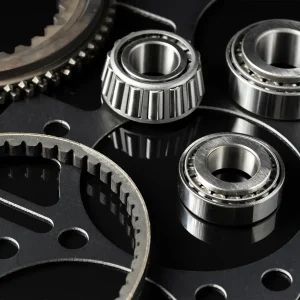Trading
Technical and Execution Details of the Project
1. Technical System inside the Vehicles:
Internal and External Display Screens:
High-definition (HD) screens resistant to breakage and impact.
Specially designed to withstand high temperatures in desert regions, operating efficiently even under harsh weather conditions.
Used to broadcast live streams of training activities inside the vehicle, allowing trainees outside to follow the process step-by-step.
Comprehensive Surveillance Cameras (Internal and External):
Equipped with night vision technology.
Cover all angles of the vehicle to ensure comprehensive documentation and assessment.
Connected to a recording system to save training sessions and analyze performance.
Internal and External Sound System:
Enables the trainer inside the vehicle to interact vocally with trainees outside.
Equipped with internal soundproofing to enhance the quality of delivery and communication.
Integrated Recording System (Video + Audio):
Documents all training steps in high quality.
Allows playback of sessions for trainer and trainee performance evaluation purposes.
2. Physical Structure and Internal Equipment:
The internal structure of the vehicle is designed to simulate a real-life ambulance environment, including:
Stretcher, vital signs monitoring devices, real medical emergency tools, defibrillators, and more.
Emergency lighting inside the vehicle similar to that used in actual field ambulances.
High-efficiency internal ventilation and cooling system.
3. Mobility and Field Operation Capability:
The vehicles are equipped with flexible stabilizing mechanisms, allowing stability even on uneven surfaces.
The entire system can operate through an independent power source (mobile generator or integrated batteries).
These vehicles enable reaching remote provinces and areas lacking training centers.
4. Achieved Operational and Training Benefits:
Providing interactive and effective practical field training.
Facilitating the implementation of training courses across all regions of the Kingdom without needing to transfer trainees to major cities.
Enhancing the competency and qualification levels of emergency response teams.
Supporting the Authority’s plans to transition towards smart, mobile training.
Accurate and high-quality documentation and evaluation of training performance.
5. Execution and Supervision:
Al-Dhiyabi Group supervised the project from the design stage to the trial operation stage.
Successful field tests of the vehicles were conducted in various environments, confirming technical performance efficiency and operational responsiveness.
Operation manuals and maintenance guides for the equipment and systems were delivered for all vehicles.
Conclusion:
This project represents a qualitative leap in field training tools and falls within the Saudi Red Crescent Authority’s strategic direction to enhance the readiness of ambulance teams across the Kingdom using smart, flexible solutions.
The entire project was successfully implemented, meeting precise specifications that meet field and training requirements, while taking into account the climatic and environmental conditions of various regions of the Kingdom of Saudi Arabia.




